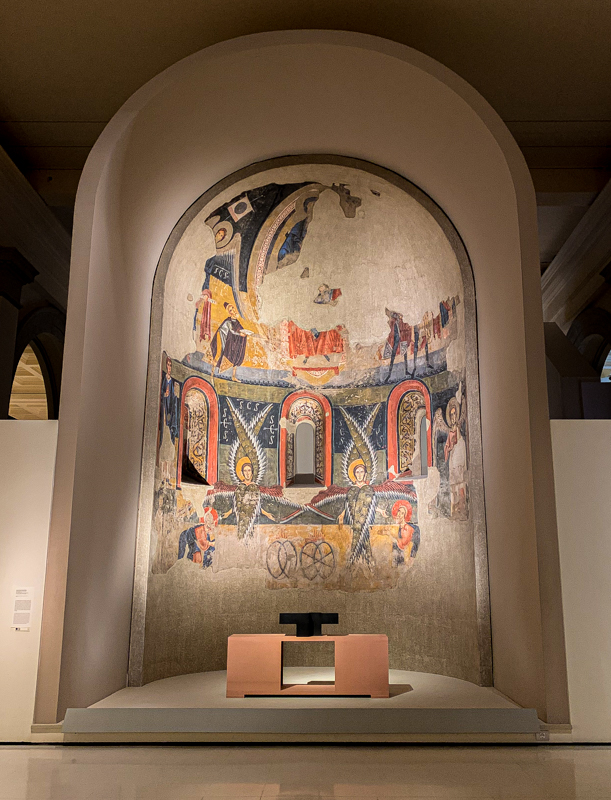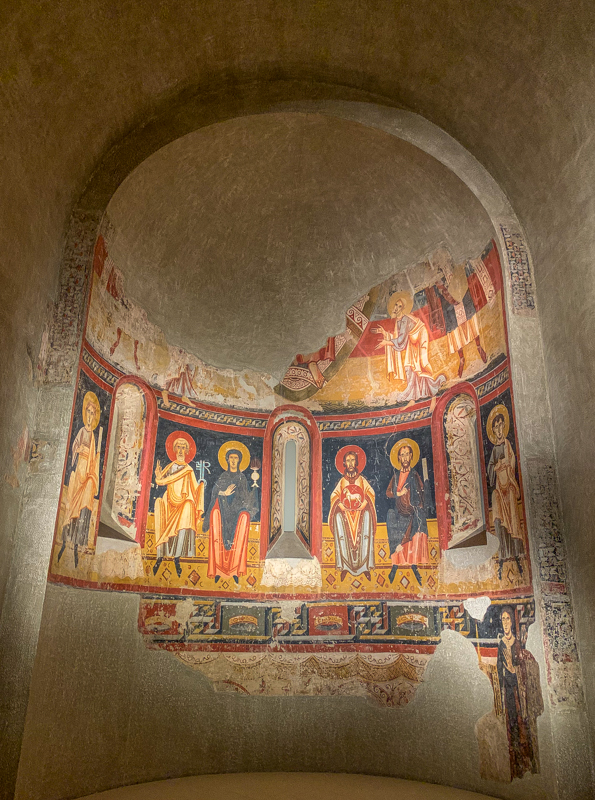
The following two photos are of apses found in the National Art Museum of Catalonia. The medieval Romanesque art was originally on the apses in churches from the end of the 11th century. The art was transferred via fresco to canvas and then placed in the replicated apses of the museum. Effort and precision were put into preserving this kind of thousand-year-old art that you don’t come by every day. What were the motivations of those who worked so hard to preserve this kind of historic art? Did they merely want to preserve history? Did they do it out of respect for generations past or even the Catholic culture? Did and does it still raise the prestige of the region if they have such history in their possession? No matter the reasons, the art is here to stay, deemed to be admired by locals and tourists alike.

